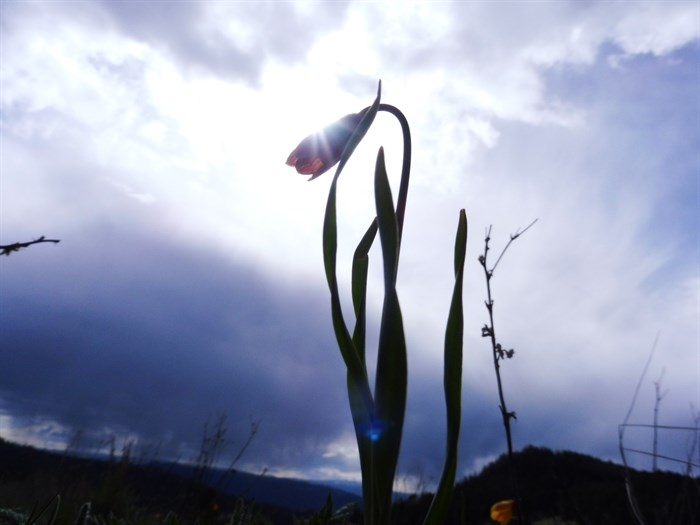Science
The 2020 'ring of fire' solar eclipse occurs Sunday. Here's how to watch online. – NBCNews.com

A “ring of fire” solar eclipse will briefly appear in parts of Africa and Asia this weekend, and if you aren’t out there in person, you can take in the spectacular show online.
Sunday’s solar eclipse is what is known as an annular eclipse, in which the moon does not completely cover the sun as it passes between the star and Earth as seen from our planet. Instead, a ring of sunlight will still shine around the outer edge, hence its nickname: a “ring of fire” eclipse.
The time of maximum eclipse, when that “ring of fire” event happens, will be at 2:40 a.m. ET on Sunday when the moon crosses into the center of the sphere of the sun from Earth’s perspective. The eclipse starts at 11:45 p.m. ET on June 20 and ends at 5:34 a.m. ET, according to NASA.
Related: Solar eclipse guide 2020: When, where & how to see them
The eclipse will happen just a couple of hours after the moon enters the “new moon” phase. Because the moon will be near its apogee or farthest part from Earth, the size of the moon’s disk will not be quite enough to cover the sun. The small ring of sunlight still visible will make this an “annular” eclipse (from the Latin annulus, meaning ring-shaped.)
Regions in the path of visibility include the Democratic Republic of the Congo, Central African Republic, South Sudan, Sudan, Ethiopia, the Red Sea, Yemen, Saudi Arabia, Oman, the Gulf of Oman, Pakistan, India, China, Taiwan, the Philippine Sea (south of Guam), northern Australia and the north Pacific Ocean.
IMPOWhile you will need to take precautions to protect your eyes if you are there in person, online the solar eclipse is perfectly safe to view with unprotected eyes. There are several options available.
Slooh webcast
Astronomy broadcasting service Slooh will have a virtual star party starting at 1 a.m. ET. You can watch it live here on Space.com, courtesy of Slooh.
While the general public can also stream the show on Facebook, Twitter and YouTube, paid Slooh members (individual membership annual prices start at $20) can join a live discussion together at Slooh.com.
“Slooh will feature live streams of the eclipse from several partner observatories in the Middle East, India, and the Far East,” Slooh said in a release. “Members will be able to snap photos of the eclipse throughout the live coverage. They can load their images into Slooh’s new Eclipse Quest, which will automatically generate a superb memento poster of the event.”
Time and Date
Time and Date, a website that tracks skywatching events, will start its own webcast at 1 a.m. ET.
“Due to COVID-19 travel restrictions, our original plan of sending our mobile observatory to Oman had to be scrapped,” representatives stated about the broadcast. “While we are sad about not being able to go, we are working hard to make sure that we still bring you stunning live images and commentary of this extraordinary astronomical event.”
The Virtual Telescope Project
The Virtual Telescope Project will begin its webcast at 1:30 a.m. ET. The company is based in Rome, but will partner with imagers and videographers in Africa and Asia “thanks to very generous people willing to share their views with the world,” said founder Gianluca Masi in a statement.
“Yes, it will be somewhat unique; the … solar eclipse will happen soon after the solstice, making the event even more fascinating,” Masi added.
Participants in The Virtual Telescope Project’s webcast so far include Masi himself, Ahmed Saad (Karachi, Pakistan), the Taqwa Observatory in Pakistan, Space India, the Astronomical Society of Somalia, Abu Dhabi’s International Astronomical Center, Ali Abdullah (Lahore, Pakistan) and Lij Tuha (Dodola, Ethiopia.)
While the path of the eclipse is long — going across two continents and 14 countries — the path of greatest visibility is quite narrow, Time and Date said. In West Africa, the path reaches its maximum width of 53 miles (85 kilometers) wide and the “ring of fire” lasts for about 1 minute and 20 seconds.
Sunday’s “ring of fire” solar eclipse comes amid the so-called eclipse season of 2020, which features three eclipses (two of the moon and one of the sun) in the space of one month.
The first event was a relatively minor penumbral lunar eclipse on June 5. After Sunday’s solar eclipse, another minor lunar eclipse will occur overnight on July 4 and 5.
Science
iN PHOTOS: Nature lovers celebrate flora, fauna for Earth Day in Kamloops, Okanagan | iNFOnews | Thompson-Okanagan's News Source – iNFOnews


Photographers are sharing their favourite photos of flora and fauna captured in Kamloops and the Okanagan in celebration of Earth Day.
First started in the United States in the 70s, the special day on April 22 continues to be acknowledged around the globe. It’s a day to celebrate the planet and a reminder of the need for environmental conservation and sustainability, according to EarthDay.org.
These stunning nature photos show life in ponds and forests, in skies and on mountains, capturing the beauty and wonder of our local natural environments.
Area photographers shared some of their favourite finds and artistic captures. From frogs to flowers, the great outdoors is teeming with life.
If you have nature photos you want to share, send them to news@infonews.ca.








To contact a reporter for this story, email Shannon Ainslie or call 250-819-6089 or email the editor. You can also submit photos, videos or news tips to the newsroom and be entered to win a monthly prize draw.
We welcome your comments and opinions on our stories but play nice. We won’t censor or delete comments unless they contain off-topic statements or links, unnecessary vulgarity, false facts, spam or obviously fake profiles. If you have any concerns about what you see in comments, email the editor in the link above. SUBSCRIBE to our awesome newsletter here.


Science
An extra moon may be orbiting Earth — and scientists think they know exactly where it came from – Livescience.com


A fast-spinning asteroid that orbits in time with Earth may be a wayward chunk of the moon. Now, scientists think they know exactly which lunar crater it came from.
A new study, published April 19 in the journal Nature Astronomy, finds that the near-Earth asteroid 469219 Kamo’oalewa may have been flung into space when a mile-wide (1.6 kilometers) space rock hit the moon, creating the Giordano Bruno crater.
Kamo’oalewa’s light reflectance matches that of weathered lunar rock, and its size, age and spin all match up with the 13.6-mile-wide (22 km) crater, which sits on the far side of the moon, the study researchers reported.
China plans to launch a sample-return mission to the asteroid in 2025. Called Tianwen-2, the mission will return pieces of Kamo’oalewa about 2.5 years later, according to Live Science’s sister site Space.com.
“The possibility of a lunar-derived origin adds unexpected intrigue to the [Tianwen-2] mission and presents additional technical challenges for the sample return,” Bin Cheng, a planetary scientist at Tsinghua University and a co-author of the new study, told Science.
Related: How many moons does Earth have?
Kamo’oalewa was discovered in 2016 by researchers at Haleakala Observatory in Hawaii. It has a diameter of about 100 to 200 feet (approximately 30 to 60 meters, or about the size of a large Ferris wheel) and spins at a rapid clip of one rotation every 28 minutes. The asteroid orbits the sun in a similar path to Earth, sometimes approaching within 10 million miles (16 million km).
window.sliceComponents = window.sliceComponents || ;
externalsScriptLoaded.then(() => {
window.reliablePageLoad.then(() => {
var componentContainer = document.querySelector(“#slice-container-newsletterForm-articleInbodyContent-UG4KJ7zrhxAytcHZQxVzXK”);
if (componentContainer)
var data = “layout”:”inbodyContent”,”header”:”Sign up for the Live Science daily newsletter now”,”tagline”:”Get the worldu2019s most fascinating discoveries delivered straight to your inbox.”,”formFooterText”:”By submitting your information you agree to the Terms & Conditions and Privacy Policy and are aged 16 or over.”,”successMessage”:”body”:”Thank you for signing up. You will receive a confirmation email shortly.”,”failureMessage”:”There was a problem. Please refresh the page and try again.”,”method”:”POST”,”inputs”:[“type”:”hidden”,”name”:”NAME”,”type”:”email”,”name”:”MAIL”,”placeholder”:”Your Email Address”,”required”:true,”type”:”hidden”,”name”:”NEWSLETTER_CODE”,”value”:”XLS-D”,”type”:”hidden”,”name”:”LANG”,”value”:”EN”,”type”:”hidden”,”name”:”SOURCE”,”value”:”60″,”type”:”hidden”,”name”:”COUNTRY”,”type”:”checkbox”,”name”:”CONTACT_OTHER_BRANDS”,”label”:”text”:”Contact me with news and offers from other Future brands”,”type”:”checkbox”,”name”:”CONTACT_PARTNERS”,”label”:”text”:”Receive email from us on behalf of our trusted partners or sponsors”,”type”:”submit”,”value”:”Sign me up”,”required”:true],”endpoint”:”https://newsletter-subscribe.futureplc.com/v2/submission/submit”,”analytics”:[“analyticsType”:”widgetViewed”],”ariaLabels”:;
var triggerHydrate = function()
window.sliceComponents.newsletterForm.hydrate(data, componentContainer);
if (window.lazyObserveElement)
window.lazyObserveElement(componentContainer, triggerHydrate);
else
triggerHydrate();
}).catch(err => console.log(‘Hydration Script has failed for newsletterForm-articleInbodyContent-UG4KJ7zrhxAytcHZQxVzXK Slice’, err));
}).catch(err => console.log(‘Externals script failed to load’, err));
Follow-up studies suggested that the light spectra reflected by Kamo’oalewa was very similar to the spectra reflected by samples brought back to Earth by lunar missions, as well as to meteorites known to come from the moon.
Cheng and his colleagues first calculated what size object and what speed of impact would be necessary to eject a fragment like Kamo’oalewa from the lunar surface, as well as what size crater would be left behind. They figured out that the asteroid could have resulted from a 45-degree impact at about 420,000 mph (18 kilometers per second) and would have left a 6-to-12-mile-wide (10 to 20 km) crater.
There are tens of thousands of craters that size on the moon, but most are ancient, the researchers wrote in their paper. Near-Earth asteroids usually last only about 10 million years, or at most up to 100 million years before they crash into the sun or a planet or get flung out of the solar system entirely. By looking at young craters, the team narrowed down the contenders to a few dozen options.
The researchers focused on Giordano Bruno, which matched the requirements for both size and age. They found that the impact that formed Giordano Bruno could have created as many as three still-extant Kamo’oalewa-like objects. This makes Giordano Bruno crater the most likely source of the asteroid, the researchers concluded.
“It’s like finding out which tree a fallen leaf on the ground came from in a vast forest,” Cheng wrote on X, formerly known as Twitter.
Confirmation will come after the Tianwen-2 mission brings a piece of Kamo’oalewa back to Earth. Scientists already have a sample of what is believed to be ejecta from Giordano Bruno crater in the Luna 24 sample, a bit of moon rock brought back to Earth in a 1976 NASA mission. By comparing the two, researchers could verify Kamo’oalewa’s origin.
Editor’s note: This article’s headline was updated on April 23 at 10 a.m. ET.
Science
"Hi, It's Me": NASA's Voyager 1 Phones Home From 15 Billion Miles Away – NDTV


<!–
Launched in 1977, Voyager 1 was mankind’s first spacecraft to enter the interstellar medium
Washington, United States:
NASA’s Voyager 1 probe — the most distant man-made object in the universe — is returning usable information to ground control following months of spouting gibberish, the US space agency announced Monday.
The spaceship stopped sending readable data back to Earth on November 14, 2023, even though controllers could tell it was still receiving their commands.
In March, teams working at NASA’s Jet Propulsion Laboratory discovered that a single malfunctioning chip was to blame, and devised a clever coding fix that worked within the tight memory constraints of its 46-year-old computer system.
window._rrCode = window._rrCode || [];_rrCode.push(function() (function(v,d,o,ai)ai=d.createElement(“script”);ai.defer=true;ai.async=true;ai.src=v.location.protocol+o;d.head.appendChild(ai);)(window, document, “//a.vdo.ai/core/v-ndtv/vdo.ai.js”); );
“Voyager 1 spacecraft is returning usable data about the health and status of its onboard engineering systems,” the agency said.
Hi, it’s me. – V1 https://t.co/jgGFBfxIOe
— NASA Voyager (@NASAVoyager) April 22, 2024
“The next step is to enable the spacecraft to begin returning science data again.”
Launched in 1977, Voyager 1 was mankind’s first spacecraft to enter the interstellar medium, in 2012, and is currently more than 15 billion miles from Earth. Messages sent from Earth take about 22.5 hours to reach the spacecraft.
Its twin, Voyager 2, also left the solar system in 2018.
Both Voyager spacecraft carry “Golden Records” — 12-inch, gold-plated copper disks intended to convey the story of our world to extraterrestrials.
These include a map of our solar system, a piece of uranium that serves as a radioactive clock allowing recipients to date the spaceship’s launch, and symbolic instructions that convey how to play the record.
The contents of the record, selected for NASA by a committee chaired by legendary astronomer Carl Sagan, include encoded images of life on Earth, as well as music and sounds that can be played using an included stylus.
window._rrCode = window._rrCode || [];_rrCode.push(function(){ (function(d,t) var s=d.createElement(t); var s1=d.createElement(t); if (d.getElementById(‘jsw-init’)) return; s.setAttribute(‘id’,’jsw-init’); s.setAttribute(‘src’,’https://www.jiosaavn.com/embed/_s/embed.js?ver=’+Date.now()); s.onload=function()document.getElementById(‘jads’).style.display=’block’;s1.appendChild(d.createTextNode(‘JioSaavnEmbedWidget.init(a:”1″, q:”1″, embed_src:”https://www.jiosaavn.com/embed/playlist/85481065″,”dfp_medium” : “1”,partner_id: “ndtv”);’));d.body.appendChild(s1);; if (document.readyState === ‘complete’) d.body.appendChild(s); else if (document.readyState === ‘loading’) var interval = setInterval(function() if(document.readyState === ‘complete’) d.body.appendChild(s); clearInterval(interval); , 100); else window.onload = function() d.body.appendChild(s); ; )(document,’script’); });
Their power banks are expected to be depleted sometime after 2025. They will then continue to wander the Milky Way, potentially for eternity, in silence.
(Except for the headline, this story has not been edited by NDTV staff and is published from a syndicated feed.)
-
Business22 hours ago
Honda to build electric vehicles and battery plant in Ontario, sources say – Global News
-



 Science23 hours ago
Science23 hours agoWill We Know if TRAPPIST-1e has Life? – Universe Today
-



 Health20 hours ago
Health20 hours agoSee how chicken farmers are trying to stop the spread of bird flu – Fox 46 Charlotte
-



 Health23 hours ago
Health23 hours agoSimcoe-Muskoka health unit urges residents to get immunized
-



 Investment21 hours ago
Investment21 hours agoOwn a cottage or investment property? Here's how to navigate the new capital gains tax changes – The Globe and Mail
-



 Science18 hours ago
Science18 hours agoOsoyoos commuters invited to celebrate Earth Day with the Leg Day challenge – Oliver/Osoyoos News – Castanet.net
-
News18 hours ago
Freeland defends budget measures, as premiers push back on federal involvement – CBC News
-
News21 hours ago
‘A real letdown’: Disabled B.C. man reacts to federal disability benefit – Global News











